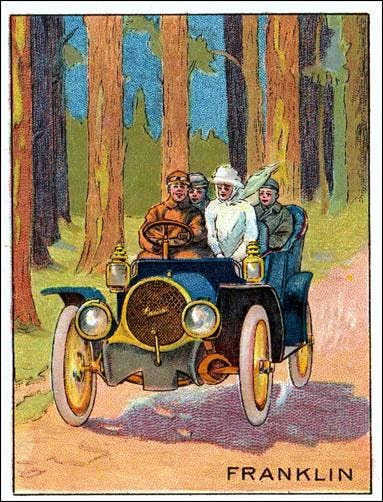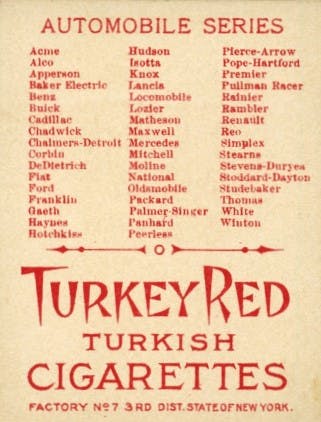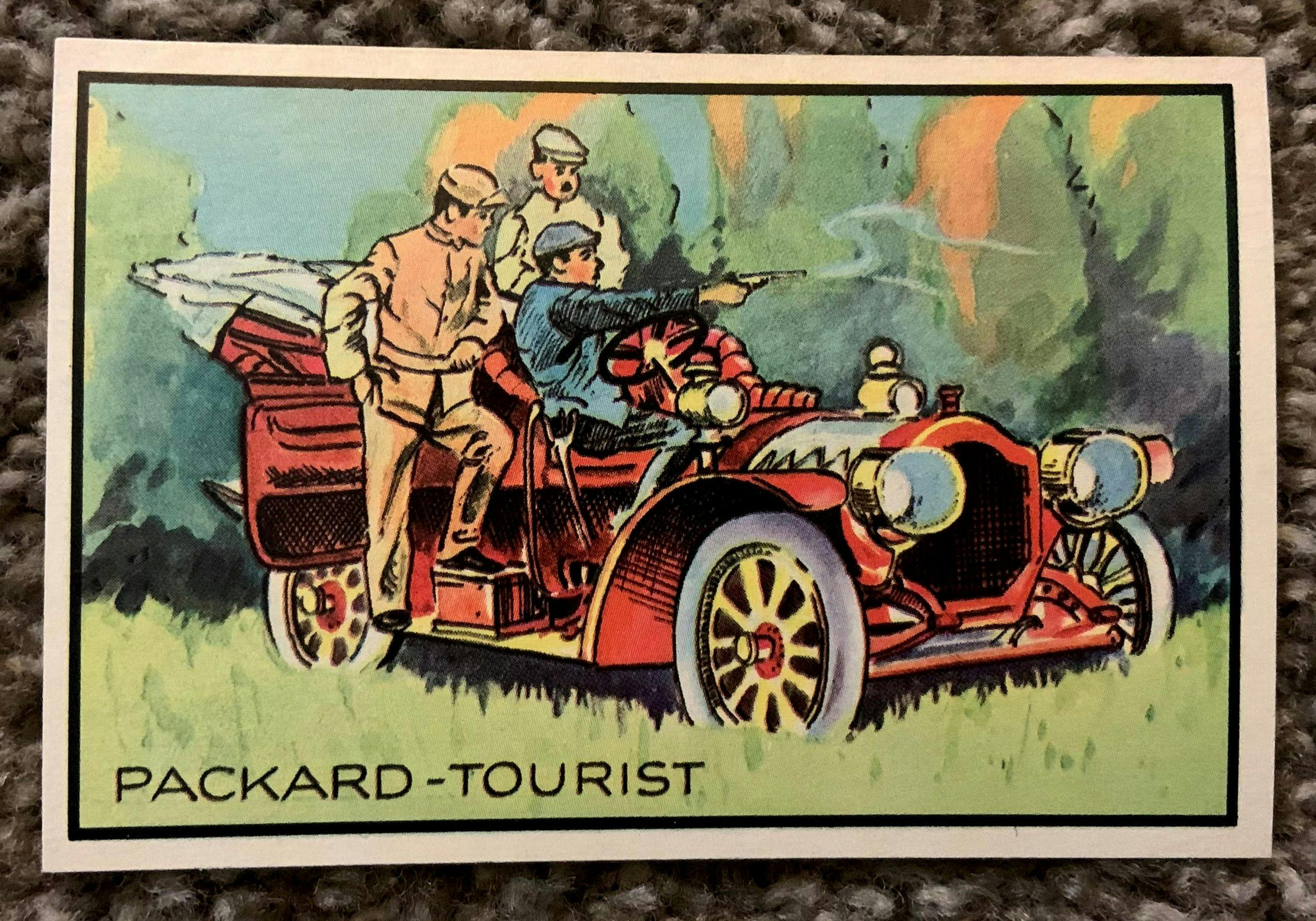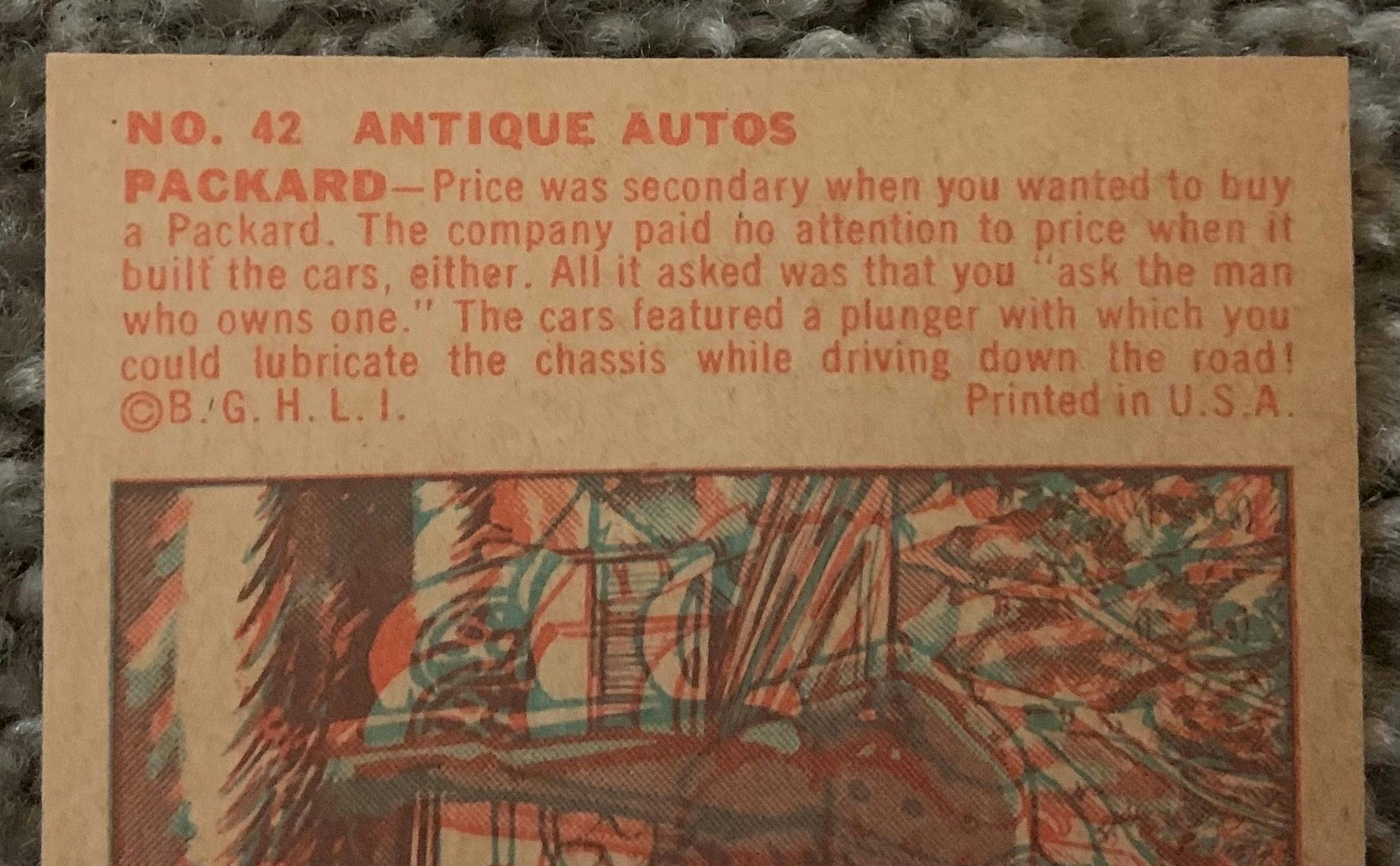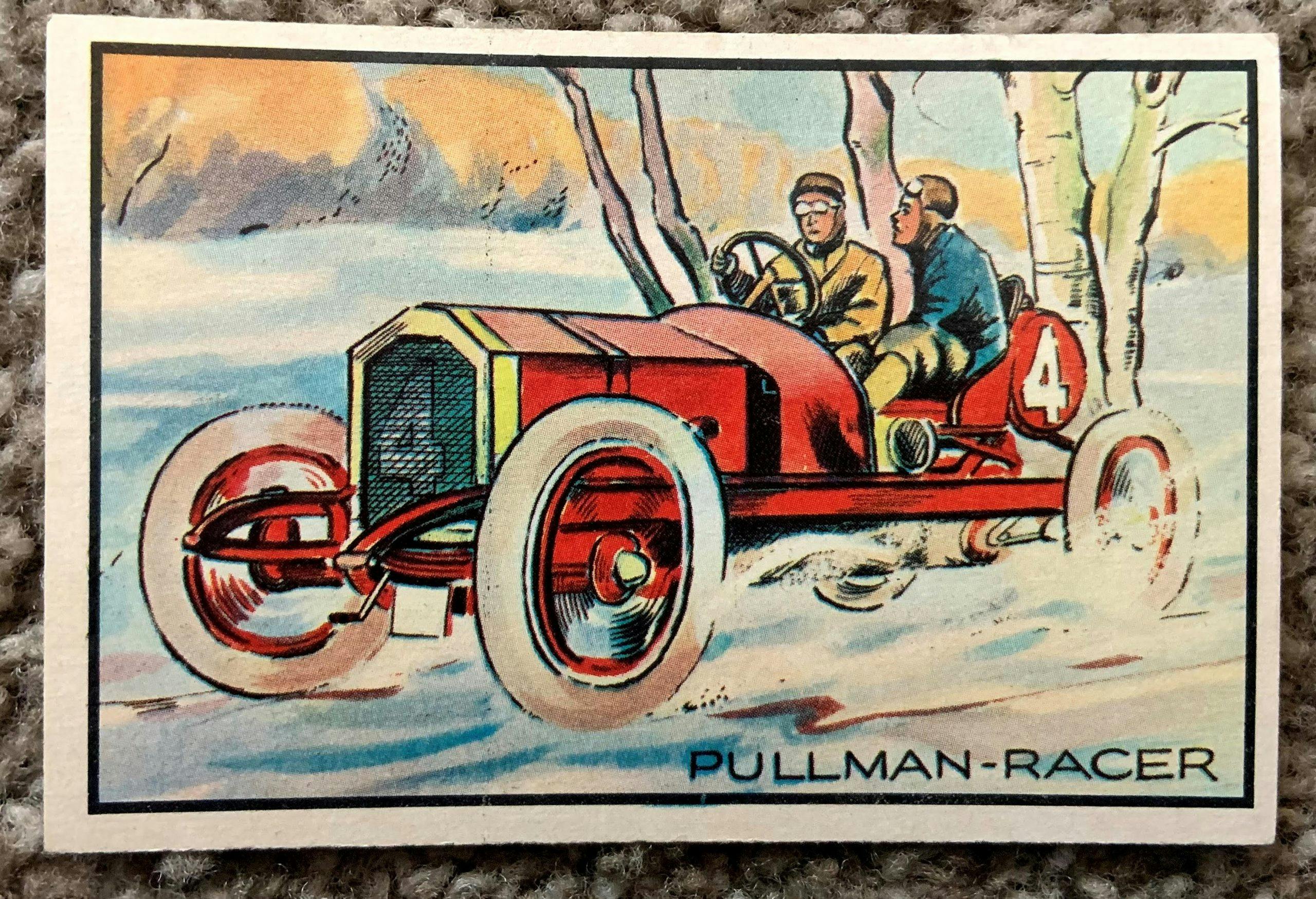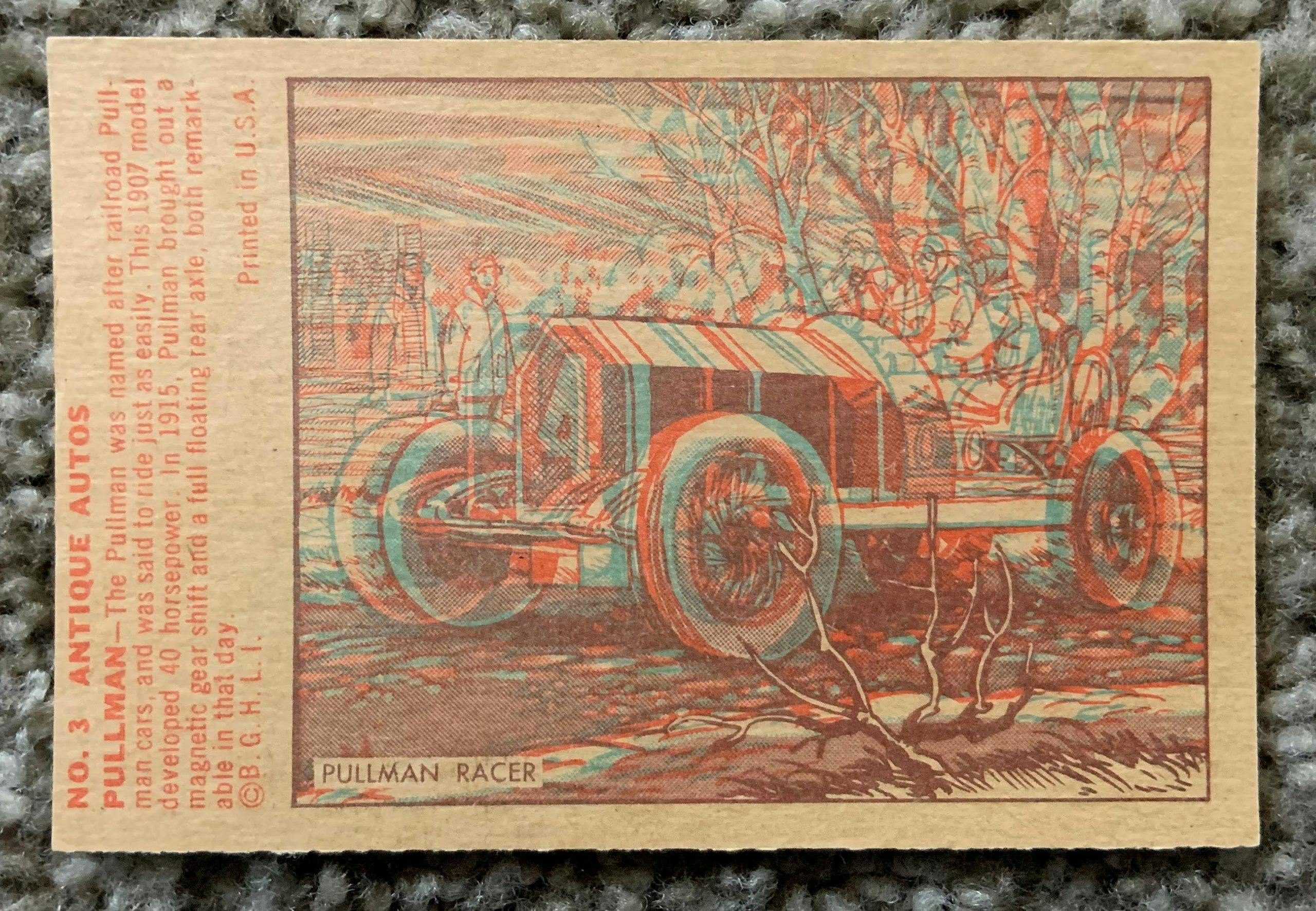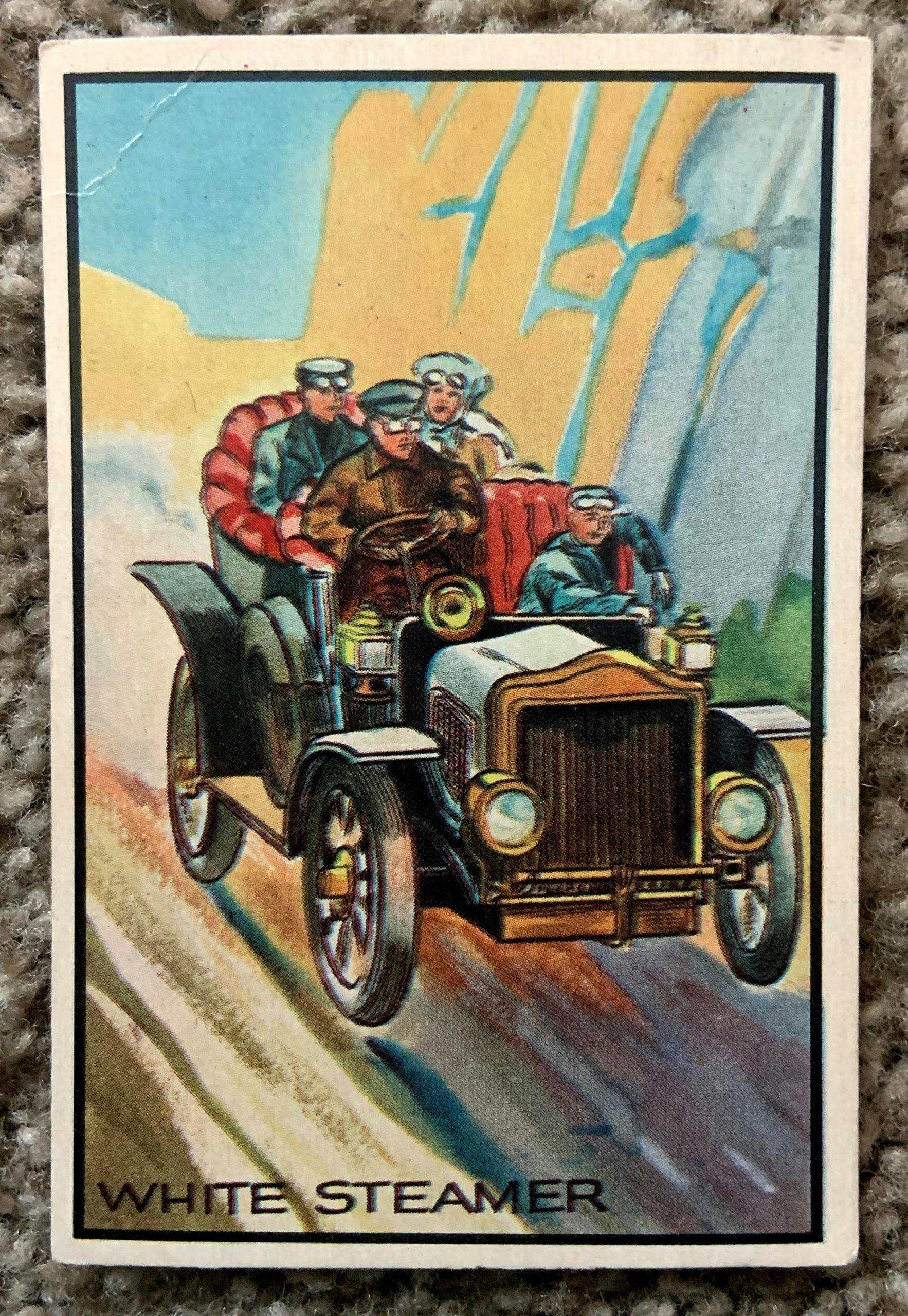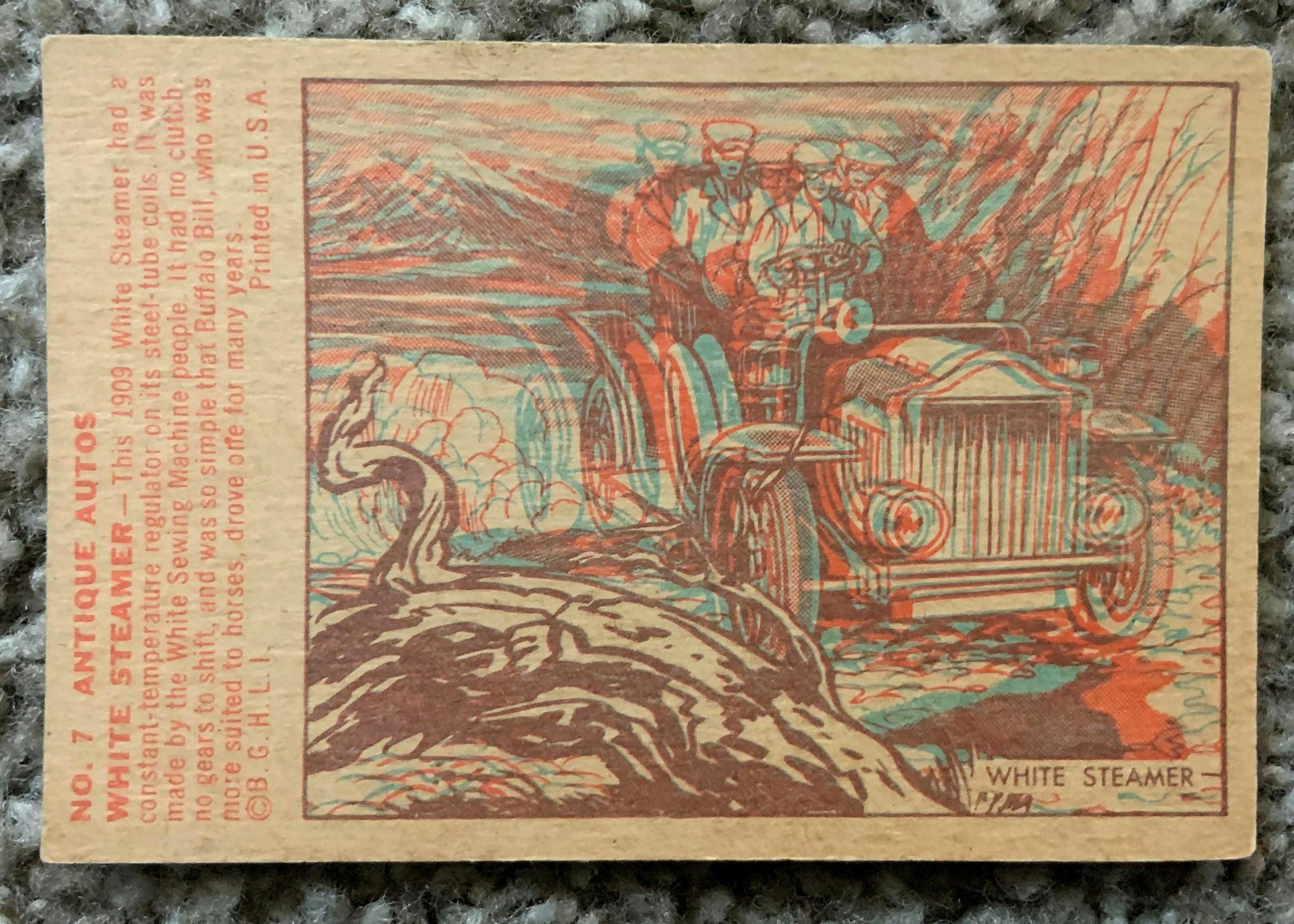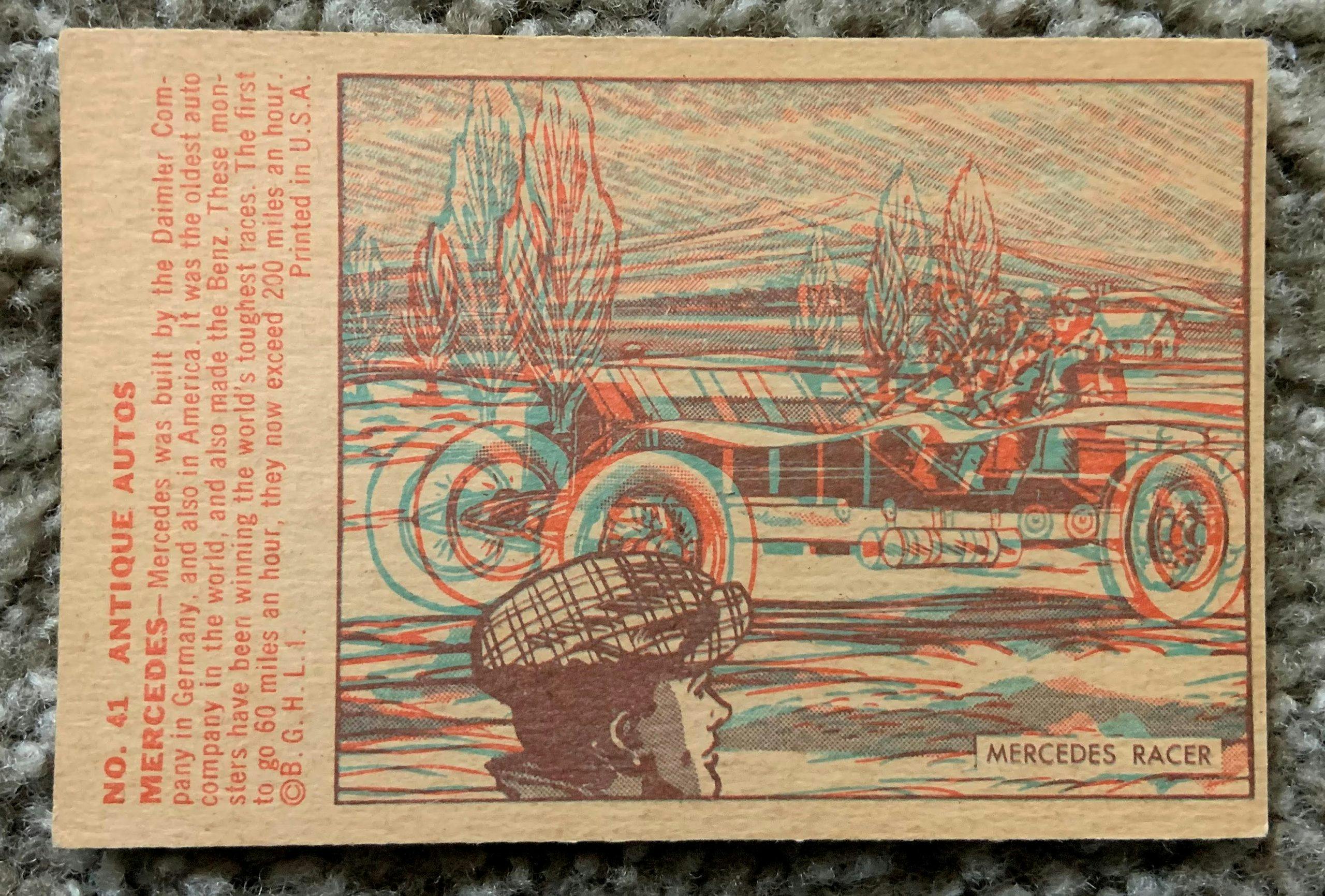1953 Bowman Antique Auto collector cards are mini works of art
Years before automakers brought back once-popular-but-discontinued models to boost their lineup—the Chevrolet Camaro and Dodge Charger immediately leap to mind—the tug of nostalgia had been used the same way on a much smaller scale.
In the 1930s, the Bowman Gum Company of Philadelphia began competing for the heart, soul, and pennies of gum-chewing Americans—mostly youth—by distributing cardboard collector cards with its bubble gum, hoping that those who wanted to accumulate an entire set of images would be encouraged to buy more gum. It’s an idea had been effectively used with a different product and audience in the late 1800s and into the 20th century, when picture cards depicting various subjects were included in small packs of cigarettes. Baseball players were the most popular.
In the early 1950s, Bowman had effectively eliminated its chief bubble-gum card competitor, Leaf, but soon a new company—Topps, Inc., of New York—had joined the collector card war and was threatening Bowman’s market share. While professional baseball and football were the most popular subject matters and served as the obvious head-to-head battlegrounds, both companies looked for additional themes that might make inroads among young and old.

By 1953, Bowman’s “non-sport” offerings included a 64-card “Firefighters” set, a 128-card “Frontier Days” set, and a 96-card “Television and Radio Stars of the National Broadcasting Company” set. The company’s smallest offering—in number of cards, not size, since all of Bowman’s cards measured 2 1/2 inches by 3 3/4 inches—was a 48-card set called “Antique Autos.”
Although plenty of popular and attractive cars from the 1920s, ’30s, and ’40s could have been included in a 1953 set devoted to classic automobiles, Bowman’s colorful images depicted only cars from the “Golden Age” of automobiles. The images are detailed works of art, colorful drawings that show each car in a “natural” setting, with drivers, passengers, and appealing backgrounds. They have white borders and black trim around the artist’s rendering.
If the cards looked vaguely familiar to a certain age group, it was for good reason: The same drawings were used in an “Automobile Series” tobacco card set in 1910. Those cards, offered in packs of Turkey Red Turkish Cigarettes, measured 2 inches by 2 5/8 inches (noticeably smaller than the Bowman versions) and included 50 cards in total, two more than in the Bowman set. (The Hotchkiss and Premier cars got the boot.)
Another obvious difference between the two versions is found on the backs of the cards. While the 1910 tobacco cards (referenced as T37 in The American Card Catalog) have identical backs—with large “Turkey Red” lettering and a full list of the automobiles—the 1953 Bowmans (catalogued R701-1) have different backs that give context to the era in which they were produced.

In the early 1950s, new 3-D technology was being used (tried?) in movies, so Bowman decided to give this reissued card set a “modern” twist by using the same 3-D gimmick. The backs of each card (numbered 1–48) have an image that’s nearly identical to the front, but in a 3-D format that will give you a headache if you stare too long. Since 3-D images require 3-D glasses, retailers handed out free glasses with every four packs purchased—although you can’t really call them glasses. You hold them up to your eyes, kind of like a magnifying glass, and unfortunately, they don’t work.
The biggest advantage that the 1953 Bowman set has over its 1910 Turkey Red cousin is that Bowman’s production staff provided a brief history of each car in a short copy block on the back. The descriptions are printed in red ink, however, which makes them difficult to read, especially if the card is in rough condition.
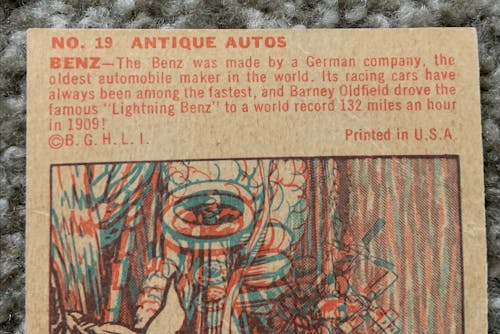
Here’s the copy about the #4 Fiat Racer, for example: “The Italian Fiat has been one of the world’s best racing cars for many years, and also one of the most expensive passenger cars. This racer was equipped with one of the very first engines cast in one piece. The cylinders had a very long stroke, and the car cost $5500.”
Most of the images are horizontal—they’re the most aesthetically pleasing—but 12 are vertical, an awkward way to portray a car that leaves little space at the top and bottom of the image.
Today the cards are neither rare nor particularly expensive, with most ranging from $5 to $30 apiece, depending on condition. You can also find the older Turkey Red cards at similar prices, although they aren’t as numerous and a full set will likely take a little more effort to assemble.
For automotive enthusiasts on a budget, both antique sets are collectible and attainable. Plus, they don’t require the garage space of their real-life counterparts. You can even find the Bowman-issued 3-D glasses for sale—not that they’re of much use. The 3-D gimmick didn’t help Bowman in-period, either, as the company soon lost its bubble gum battle with Topps and in 1956 sold its assets to its rival for $200,000 (the equivalent of $1.9 million today).
Sixty-five years later, Topps is still producing collector cards, although it’s been years since it issued an automotive set. Ironically, it’s also been decades since Topps or any other manufacturer included bubble gum in each pack of collector cards. For those of us who know that bland taste all too well, maybe it’s a good thing—regardless of nostalgia.
1953 Bowman Antique Autos (R701-1)
- Pierce-Arrow
- Corbin
- Pullman Racer
- Fiat Racer
- Cadillac
- Pope-Hartford
- White Steamer
- Chalmers-Detroit
- Gaeth
- Alco
- Chadwick Racer
- Matheson
- Locomobile Racer
- Franklin
- REO
- Mitchell
- De Dietrich
- Lancia
- Benz Racer
- Acme Racer
- Palmer-Singler
- Panhard
- Ranier
- Buick
- Moline
- Knox
- Apperson
- Baker Electric
- Hudson
- Oldsmobile
- Ford
- Maxwell
- Winton
- Isotta Racer
- Lozier Racer
- Studebaker
- Rambler
- National
- Stearns Racer
- Renault
- Mercedes Racer
- Packard Tourist
- Simplex
- Thomas
- Stoddard-Dayton Racer
- Peerless
- Haynes
- Stevens Duryea
1910 T37 Turkey Red Automobile Series (T37)
- Acme Racer
- Alco
- Apperson
- Baker Electric
- Benz-Racer
- Buick
- Cadillac
- Chadwick-Racer
- Chalmers Detroit
- Corbin
- De Dietrich
- Fiat-Racer
- Ford
- Franklin
- Gaeth
- Haynes
- Hotchkiss Racer
- Hudson
- Isotta-Racer
- Knox
- Lancia
- Locomobile-Racer
- Lozier Racer
- Matheson
- Maxwell
- Mercedes Racer
- Mitchell
- Moline
- National
- Oldsmobile
- Packard-Tourist
- Palmer-Singer
- Panhard
- Peerless
- Pierce
- Pope-Hartford
- Premier
- Pullman Racer
- Rainier
- Rambler
- Renault
- REO
- Simplex
- Stearns Racer
- Stevens Duryea
- Stoddard-Dayton Racer
- Studebaker
- Thomas
- White Steamer
- Winton

